新展预告|“北京房子”
![]() {{newsData.publisher_name}}
{{newsData.update_time}}
浏览:{{newsData.view_count}}
{{newsData.publisher_name}}
{{newsData.update_time}}
浏览:{{newsData.view_count}}
来源 | {{newsData.source}} 作者 | {{newsData.author}}
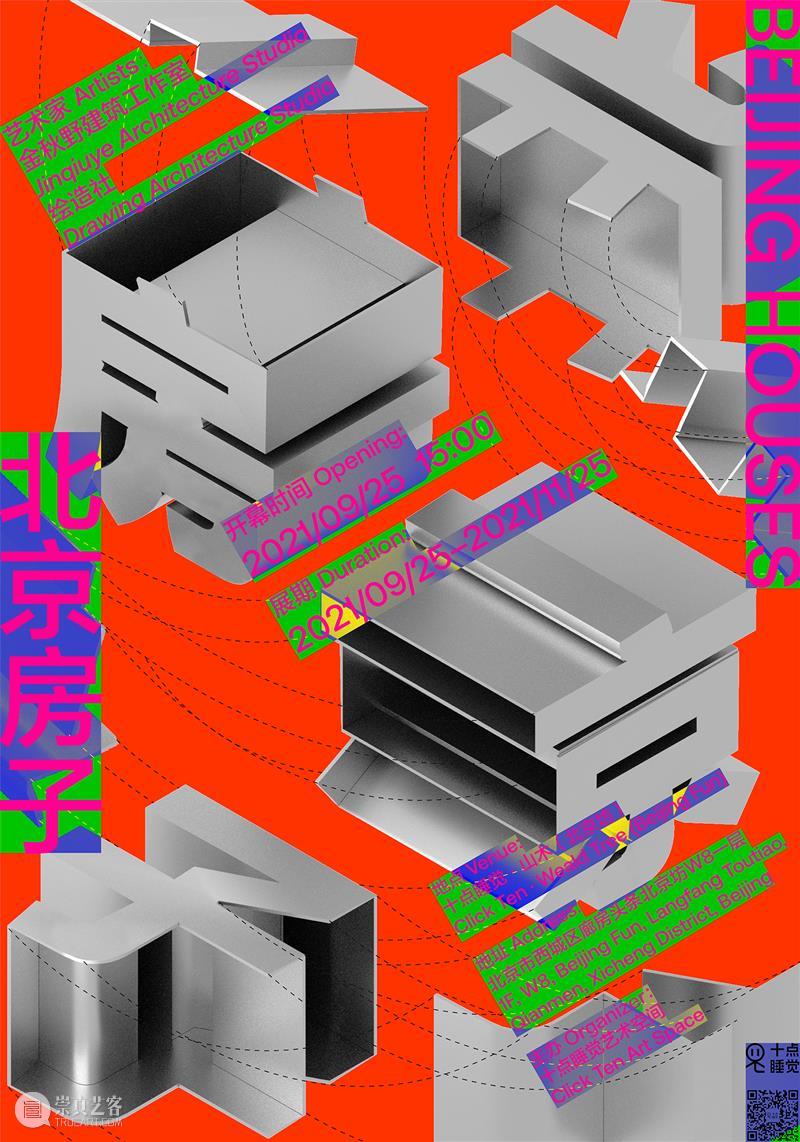
北京房子
Beijing Houses
Artists: Jinqiuye Architecture Studio, Drawing Architecture StudioDuration:September 25–November 25, 2021
Opening & Seminar:September 25, 15:00Organizer:Click Ten Art SpaceVenue:Click Ten·Weald Tree (Beijing Fun) Address: 1F, W8, Beijing Fun, Langfang Toutiao, Qianmen, Xicheng District, Beijing
城市之大,也是由一栋一栋房子凑成的,房子建成,便以相对长久的方式占据空间,成为城市中的现成物。从远处看,房子从土地上生长出来,被人占据使用,或经改造增删,逐步衰朽破坏,直至被拆除,又从土地上消失了。仿佛有机生命,有它的自然历程。且看那些房子,只要条件适宜,就会大量出现,好像蘑菇和花朵,各自处在不同的生命阶段,让城市成为一个大花园。由海量的人、海量的物、海量的信息、海量的过往和现实叠合而成的城市片段,都是花园。
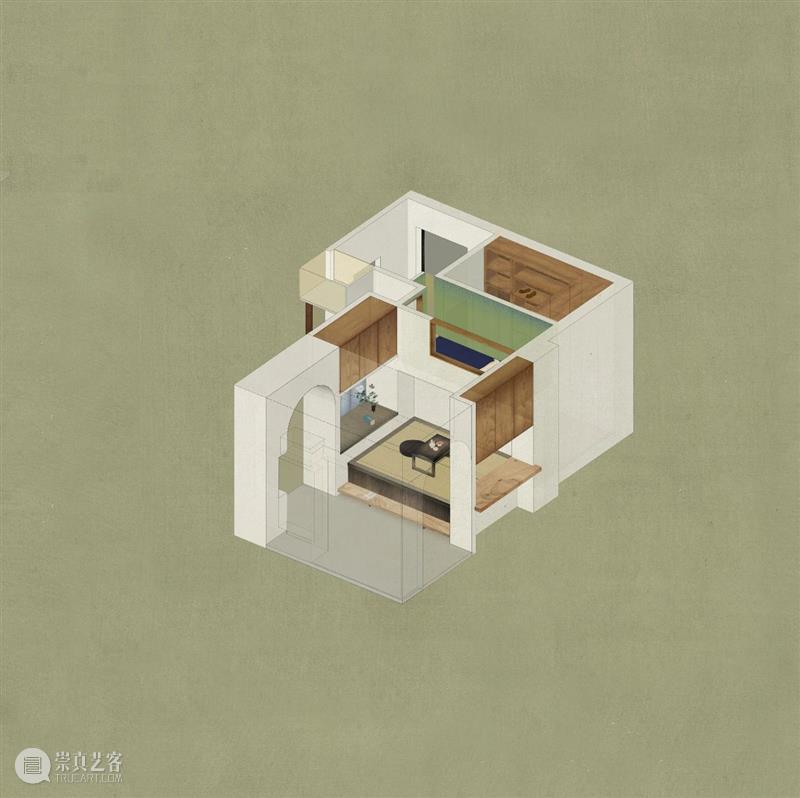 金秋野建筑工作室
金秋野建筑工作室
《叠宅|高老师家1# 》
从近处看,房屋是现成物。以现成物为素材,顺势而为,基础框架借自平常套型,分区来自对未来家庭功能的考量,家具器物充当花木,烟道管井成为空间雕塑。通过一种“有用的密度”,带来饱满的感官体验,此时“有用”成为“美”的注脚,“合理性”为“体验”背书。在最平常的城市住宅里造园林,打开房门,是每个人的日常风景和属于此时此地的现实生活。童寯发现:“中国的园林建筑布置如此错落有致,即使没有花草树木,也成园林”。王澍认为这句话打破了现代建筑和园林之间的界限。其实城市亦是如此。城市和居室,是人造环境的两极,从大到小,有形有象有血有肉,只要稍加留意,都可以拿来造园林。Beijing is a city with numerous houses.It was one house after another that made up the metropolis. One house would occupy a specific space in a relatively long period, once it was built and became a ready-made object in the city.Take a perspective from distance, you would see the house grew from the land, became occupied and used by the human beings. It would be modified and reconstructed, gradually decayed and became ruins, until be demolished, and eventually, completely vanished from the land. It seems like the organic life that has its own natural course. Look at those houses, as long as the conditions are right, they will grow and bloom like mushrooms and flowers, every single one staying in a different life stage, that makes the city a large garden. The crowds of people, tons of objects, overloaded information, and layers of the past and the reality compose the urban fragments simultaneously. Those are all gardens.Jinqiuye Architecture StudioThe Stepping House|Ms. Gao's Home #2From a close point of view, a house is a ready-made object. It also takes the ready-made objects as materials, and takes advantage of the trend. Its basic frame is borrowed from ordinary sets, the divisions are derived from the consideration of future family functions, the furniture and utensils act as flowers and trees, and the flue pipe well become space sculpture. Through the "useful density", it brings a saturated sensory experience. At this point, "usefulness" becomes the footnote of "beauty", and "reasonableness" is the endorsement of "feelings". With the creation of gardens in the most common urban residence, once open the door, everyone's daily scenery and real life that belongs to the presence appears.As Tong Jun discovered: "The layout of Chinese gardens and architecture is so well-proportioned and arranged, even if there are no flowers, grass, or trees, it would still be a garden." Wang Shu believes that this sentence breaks the boundary between modern architecture and Chinese traditional garden. In fact, when it comes to the city, the situation is quite the same. The cities and houses are two opposite poles of the man-made environment, from large to small scale, with tangible shape, image, flesh and blood, which could be taken as the materials to make gardens, as long as you keep a closer look.Drawing Architecture Studio, Tuan Jie Hu172 × 105 cm
艺术家
Artists
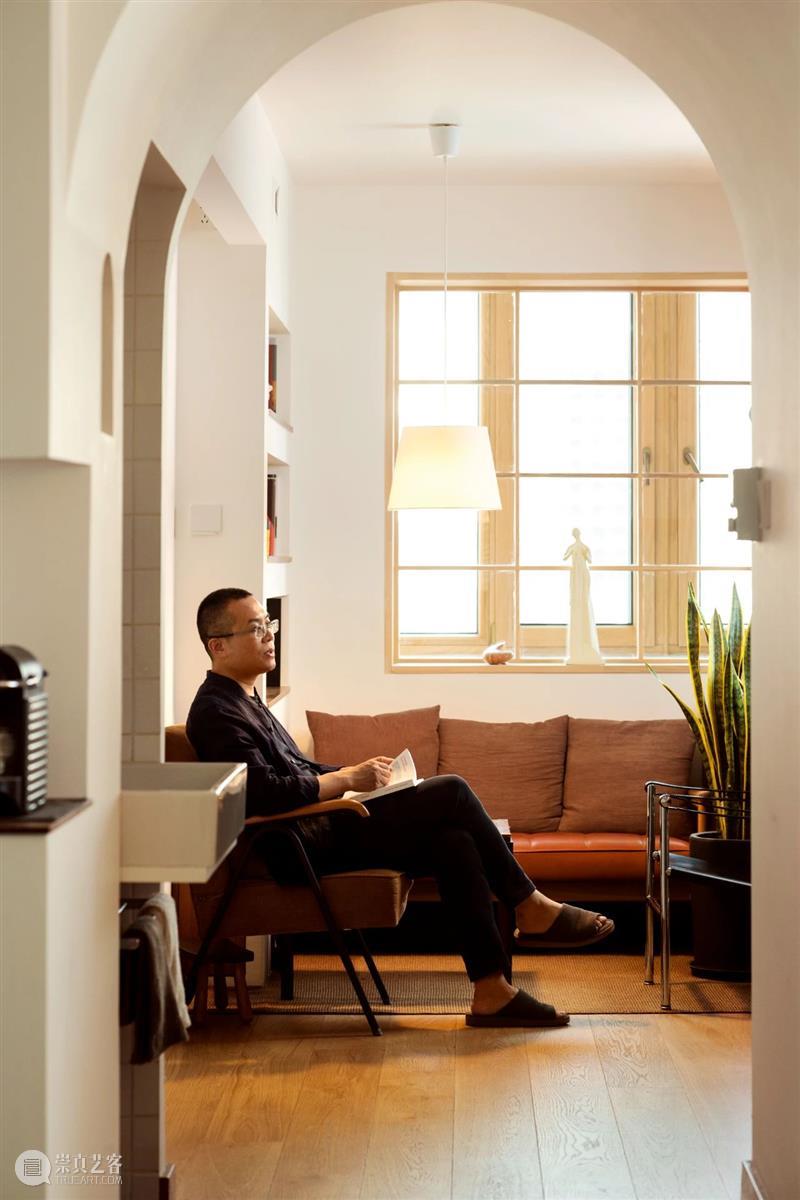
金秋野,北京建筑大学教授,建筑师,学者和建筑评论家。“金秋野建筑工作室”创始人。研究领域包括居室与生活空间设计;园林与传统设计语言的现代转译;当代建筑师及作品;复杂城市系统及其活力等。著有《花园里的花园》、《异物感》等学术著作,主持《当代中国建筑思想评论丛书》、《中国建筑与城市评论读本》等系列出版物,也是《光辉城市》、《透明性》等理论专著的译者。与王欣联合主编《乌有园》系列丛书。Jin Qiuye, professor, Beijing University of Civil Engineering and Architecture (BUCEA); architect, scholar and critic. Host of Jin Qiuye Architecture studio. Research fields include “design of the domestic space”, “translation of the Chinese traditional design language into Modern Architecture” and “contemporary architectural thoughts and criticism in China”. He is the author of more than 10 academic books and in charge of the editorial work of serial publications such as Arcadia: Painting and Garden and Readers on Chinese Architecture and Criticism. He is also the Chinese translator of more than 30 architectural theory books including Radiate City of Le Corbusier and Transparency of Colin Rowe.
Partners of Drawing Architecture Studio: Li Han (M), Hu Yan (R), Zhang Xintong (L) 绘造社由建筑师李涵和设计师胡妍于2013年在北京共同创立,致力于建筑绘图、建筑设计和城市研究的实践。通过他们的作品,绘造社探索将建筑绘图作为一个独特的媒介的潜力,来记录、表现、和批判当代城市化语境下的社会现实。他们从建筑绘图的传统中吸取灵感,结合波普艺术、后现代美学,以及当今潮流文化的影响,创作宏大的城市景观。绘造社的绘图多以超高的密度,精准的细节,扁平的画风为特色,表现多样的当代城市文化。绘造社作品曾获2018年世界建筑节建筑制图奖全场优胜奖和2016年英国皇家建筑师学会建筑绘画竞赛奖项,曾参加第4届芝加哥建筑双年展,第16届威尼斯建筑双年展中国馆和日本馆主题展、第7届深港城市/建筑双城双年展等展览,并被纽约现代艺术博物馆、旧金山现代艺术博物馆、悉尼白兔美术馆、深圳坪山美术馆、及北京山中天艺术中心收藏。绘造社出版物包括《一点儿北京》、《一点儿北京·大栅栏》、《The Joy of Architectural Drawing》、《胡同蘑菇》和《楼房花朵》。Established in 2013 by architect Li Han and designer Hu Yan in Beijing, Drawing Architecture Studio (DAS) is committed to the practice of architectural drawing, architectural design, and urban studies.Through their works, DAS explores the potential of architectural drawing as a unique medium to document, represent, and critique social realities in the context of contemporary urbanization. They derive inspiration from the tradition of architectural representation and integrates influences from Pop Art, aesthetics of postmodernism, and contemporary popular culture to create magnificent urban landscape. Their drawings are featured with high density, complex details, and flat style for the representation of diversified contemporary urban culture.DAS’ works were the winning pieces of the 2018 WAF Architecture Drawing Prize and 2016 RIBA Journal Eye Line Drawing Competition. They have been exhibited in the 4th Chicago Architecture Biennale, the Chinese Pavilion and Japan Pavilion of the 16th Venice Architecture Biennale, the 7th Shenzhen / Hong Kong Bi-City Biennale of Urbanism / Architecture, and many others; and have been acquired by Museum of Modern Art in New York, San Francisco Museum of Modern Art, White Rabbit Gallery in Sydney, Shenzhen Pingshan Art Museum, and Wind H Art Center in Beijing for their collections. DAS’ publications include A Little Bit of Beijing, A Little Bit of Beijing · Dashilar, The Joy of Architectural Drawing, Hutong Mushroom, and Apartment Blossom.

⼗点睡觉⼤企业旨在建⽴⼀个多元化的艺术⽣态与创意⽣活互联平台。⼗点睡觉艺术空间由实体空间延伸⾄社会空间,我们将聚合艺术家、策展人、设计师、创作人及各专业领域的创造力资源,为公众提供丰富多元的艺术情境及美学知识。
⼗点睡觉⼤企业同时提供新兴材料的实验平台,探索物质材料艺术化、创意化的转换路径和实现⽅式,为参与者提供新的介⼊⽅式及创作输出。在⼗点睡觉⼤企业,所有参与者都是创作者,我们将成为⼀个共同体,去打破艺术和⽣活之间的隔阂、创造与常规之间的壁垒。山中天艺术中心
Wind H Art Center
十点睡觉大企业
Click Ten Company
营业时间
山中天艺术中心
周三-周日 10:30-18:30
十点睡觉大企业
十点睡觉艺术空间
周三-周日 10:30-18:30
十点睡觉有限实验室
周一-周二 11:00-17:00
周三-周四 11:00-19:00
周五-周日 11:00-21:00
地址:北京市朝阳区798艺术区南门万红里甲31号
十点睡觉·山木(北京坊空间)
周一-周日 10:00-22:00
周一、二仅预约拜访
地址:北京市西城区廊房头条北京坊W8一层
识别二维码,一键加关注
或微信添加搜索“十点睡觉大企业”
ID:ClickTen
识别二维码,一键加关注
或微信添加搜索“山中天艺术中心”
ID:WindHArtCenter
{{flexible[0].text}}

 {{newsData.good_count}}
{{newsData.good_count}}

 {{newsData.transfer_count}}
{{newsData.transfer_count}}


 金秋野建筑工作室
金秋野建筑工作室

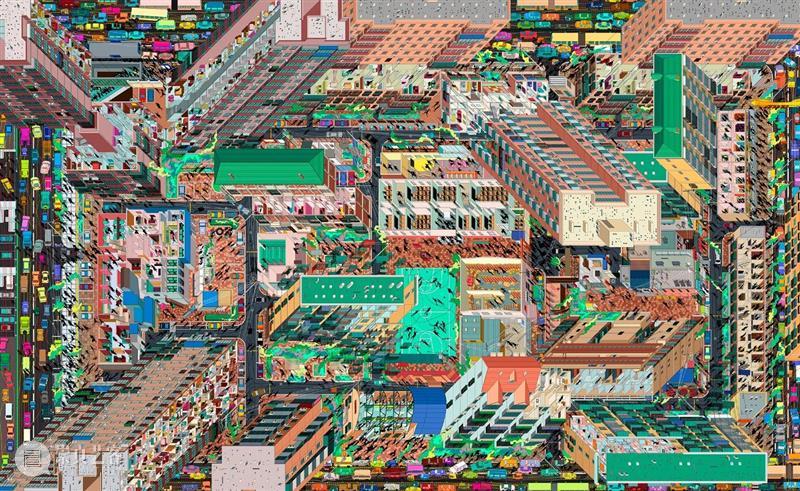

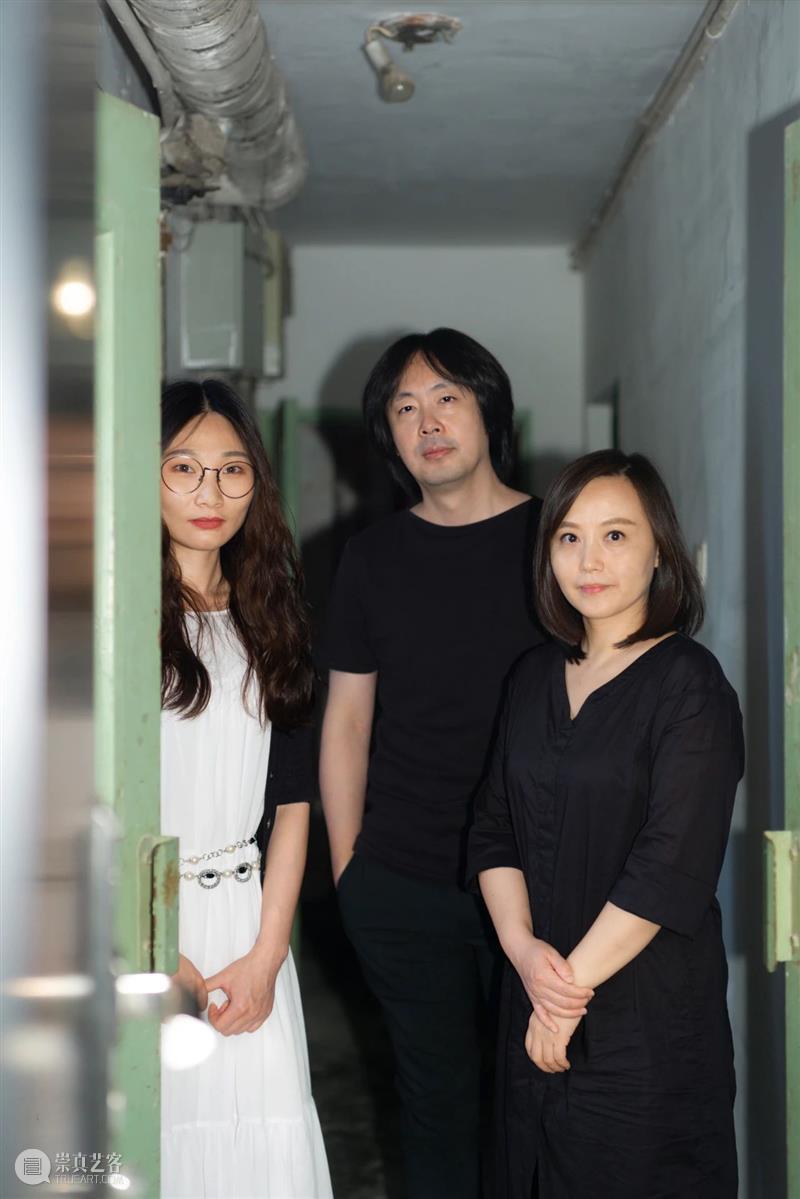





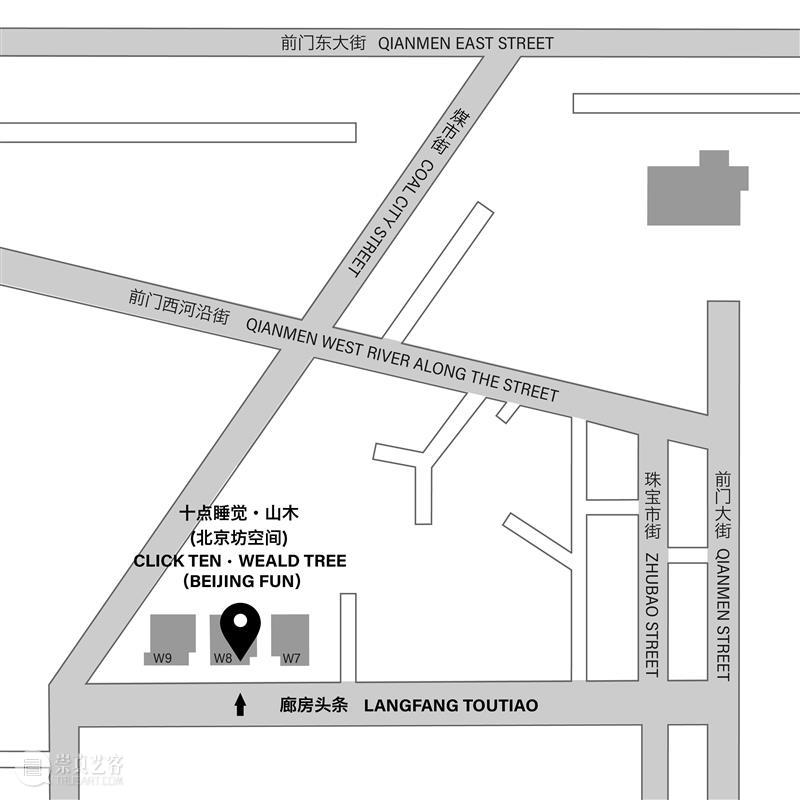








 分享
分享